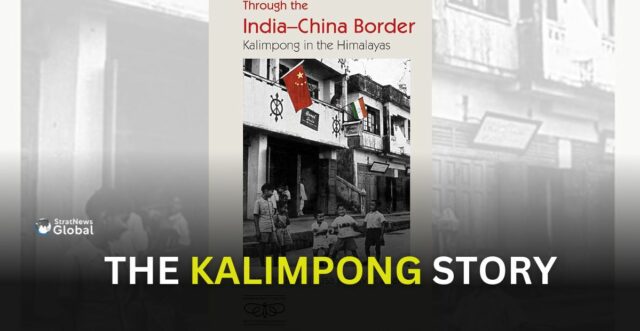There was a time when prime minister Jawaharlal Nehru and his Chinese counterpart Zhou en-Lai appeared to share some common ideas about the Himalayan town of Kalimpong, in northern Bengal.
Command Centre was one, nest of spies was another.
Nehru went so far as to say “Sometimes I begin to doubt whether the greater part of the population of Kalimpong does not consist of foreign spies.”
These and other insights figure in the recently launched book Through the Indo-China Border: Kalimpong in the Himalayas by Prem Poddar, senior research associate for World Environmental History, Sussex University, and Lisa Lindqvist Zhang, post-doctoral fellow at Tohoku University in Japan.
Zhang’s Ph.D dissertation was on Rethinking Indian Philosophy in Early 20th Century China.
Why Kalimpong? Look at the map of the Indian state of West Bengal. Kalimpong is Bengal’s northernmost district bordering Sikkim and Bhutan and once stood at the crossroads of trade, intelligence and politics.
Today Kalimpong is the headquarters of the Indian Army’s 27 Infantry Division, its focus fixed firmly towards the defence of the north (Sikkim) and east (Bhutan). In that sense, Poddar-Zhang’s book provides context.
In the late 19th and 20th centuries, Kalimpong was not just a hill station but a hub of trans-Himalayan trade. Its strategic location gave access to trade from China to Tibet and beyond via Kolkata. The trade was not only in merchandise, it was also for information.
Kalimpong was once a part of Bhutan before it was surrendered to the British sometime in the 19th century. But it continued to be swayed by the politics of Tibet, and of course Sikkim.
It wasn’t alone. Across the borderlands of Asia, towns like Kashgar in China’s far west and Dalian on its northeastern coast played similar roles, where goods, power, and ideologies crossed paths.
All three have since been absorbed and redefined by the nation-states they now serve, their roles reshaped to fit new national narratives and priorities.
But as Poddar-Zhang writes, Kalimpong’s story is particularly rich as it is not just about shifting borders, it is also about shifting purposes. It was a town where commerce gave way to espionage, and where the soft power of trade once connected empires.
Kalimpong’s proximity to the Jelep La pass in eastern Sikkim, which connects to Tibet’s Chumbi Valley, has been a historically significant artery connecting Lhasa to India. It also became a listening post to monitor Tibet and China.
The town attracted various intelligence agencies, including those from Britain, China, and India, all competing for information about the region’s political and military developments.
Following the collapse of China’s Qing empire in 1911, and the subsequent loosening of its hold over Tibet, Kalimpong became all the more important.
The current Dalai Lama’s elder brother Gyalo Thondup, lived in Kalimpong for many years with his Chinese wife, Zhu Dan. He was a key mediator between the Tibetan government-in-exile and the wider world including China.
Then there was Ma Zhucai, who helped set up the Kalimpong Chung Hwa Chinese School, which provided cover for Chinese secret agents. The colonial British government kept a close eye on the school and those who worked there.
It kept an even closer eye on Ma Zhucai, not entirely convinced he was who he claimed to be: a trader. In fact, Chinese accounts write glowingly about his patriotism and his services to China.
Poddar-Zhang’s book adds to the literature on India’s peripheral regions and underscores how fragile borders remain even today.







